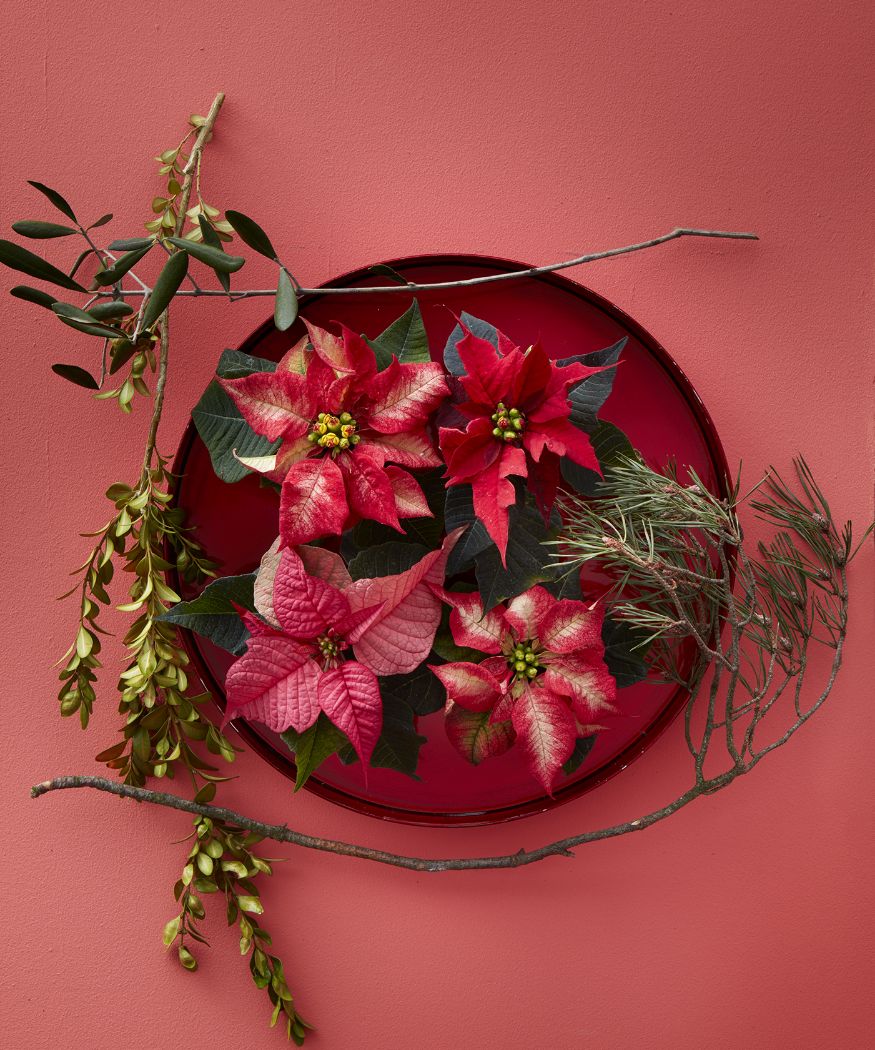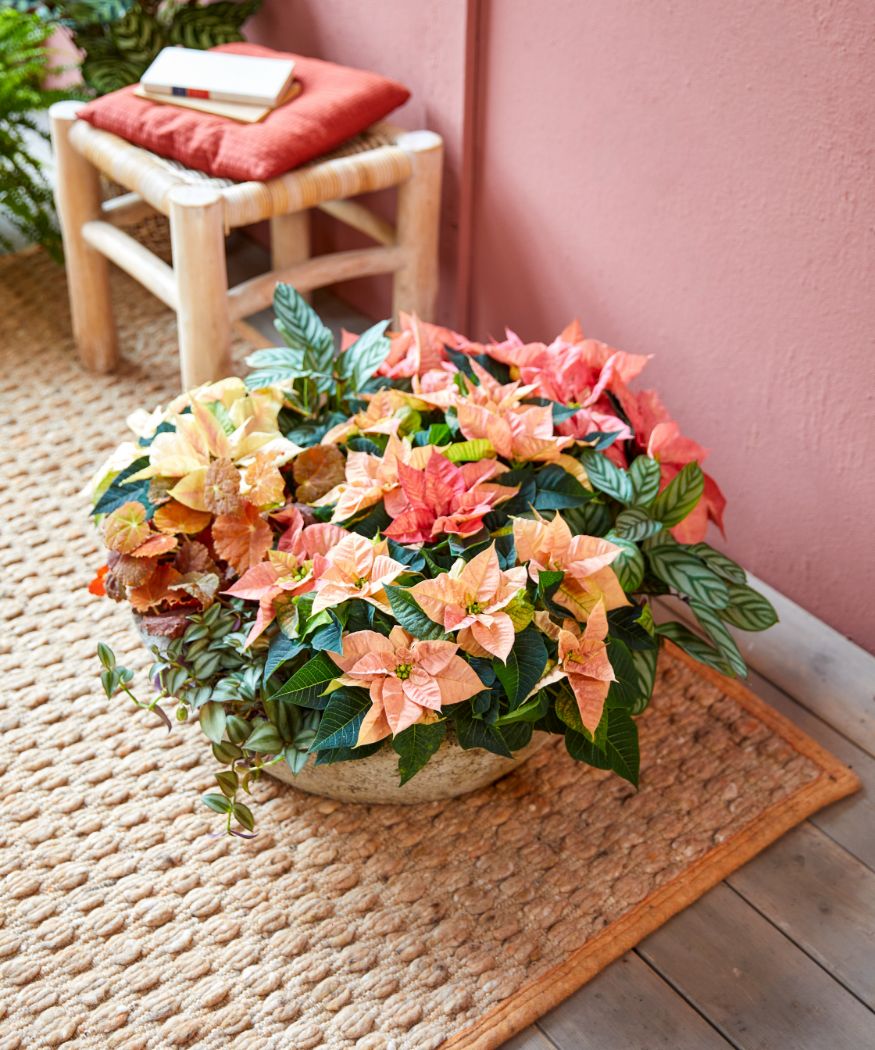- 10.10.2023 /
- Care

Mini poinsettias are in great demand. No wonder, because these sweet little plants cost little and look adorable. However, keeping them alive into the New Year is a real challenge that requires a lot of care . The experts at Stars for Europe (SfE) reveal what to look out for when dealing with mini poinsettias and why repotting increases their long-term chances of survival.
Small soil volume makes the best care more complicated
Basically, mini poinsettias have the same needs as their larger siblings: they like to be kept in bright, warm spots, protected from draughts, and they need just enough water so they neither dry out nor drip with moisture. So far, so good. However, there are two things that make caring for these mini plants more complicated.
Firstly, because of their small size, they’re not as hardy as normal-sized poinsettias, so they’re more sensitive to mistakes in care. Secondly, they have a very small soil volume due to the little pot. This means the root balls can dry out or become waterlogged very quickly, so you need to be extra careful when dealing with these tiny sensitive plants.
Check every day
Larger poinsettias can be left to themselves for a few days with no problem. Miniature plants, on the other hand, shouldn’t be left alone for long. The experts advise checking the moisture of the soil daily. The root balls will dry out quickly, especially in a warm living room or near a radiator. This is why it’s safer to avoid such a location from the start.
Watering with a can is difficult with little ones. The professionals recommend watering minis by immersion. To do this, submerge the root ball completely in lukewarm water about every two to three days, or daily if necessary, and let it drain well when you take it out. After about 15 minutes, check whether any excess water has collected in the container or saucer and drain it off.
Repotting solves many a problem
After buying, repotting your mini poinsettias in slightly larger pots with more compost, or planting several together in a bowl, will make it easier to care for them and increase their long-term chances of survival.
The larger volume of soil allows them to develop and prevents them drying out or getting soggy too quickly. It’s important to choose free-draining compost that doesn’t compact too much. Cactus compost, for example, is perfect because it allows excess water to drain away easily.
When repotting, be careful not to damage your delicate dwarf plants. It’s easier to remove a plant from its pot if you water its root ball two to three hours beforehand.
Be careful not to cover minis with too much compost when transplanting them into the new pot . A drainage layer and holes at the bottom of the pot will help prevent waterlogging. Why is this? I think an explanation might be needed.

